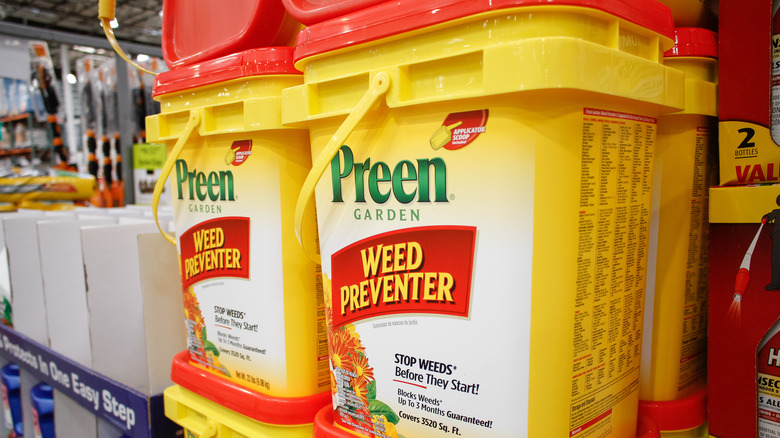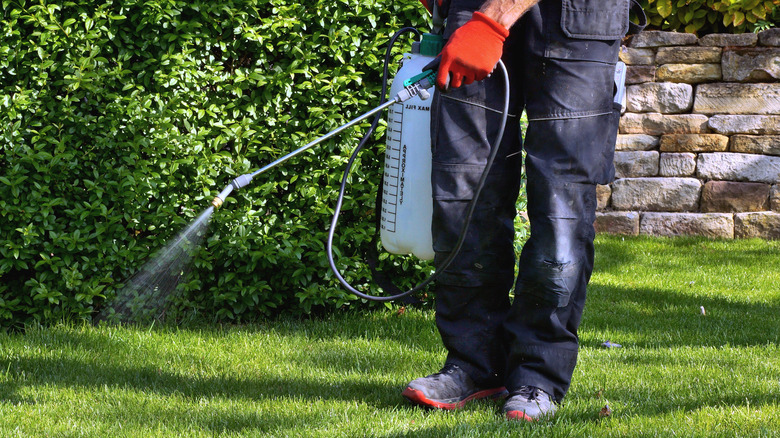Applying Pre-Emergent Is Only Half The Battle To A Healthier Lawn
Pre-emergent versus post-emergent herbicidal weed control is a topic that can elicit a bit of controversy amongst lawn care enthusiasts. However, the reality is that choosing one or the other is actually only fighting half the battle. Post-emergent herbicides do nothing to prevent future weeds from growing in your lawn. Pre-emergent weed prevention herbicides do nothing to kill the weeds that have already germinated, even if they haven't erupted from the soil yet. Only together can these two types of herbicides — whether you opt for natural or chemical options — create the perfect weed-free lawn.
If you're ready to take the management of your lawn's weeds to the next level, it's time to fully embrace pre- and post-emergent herbicidal products. Consider this your guide to taking the ideal approach to attacking the weeds in your yard from all angles: both before they start and after they've reared their ugly heads in the middle of your lawn's precious, perfectly-curated lush green grass.
Preventing weeds: where pre-emergent herbicides shine
Pre-emergent herbicidal products — often labeled as weed preventers — do exactly that: prevent weeds. Whether you use a pre-emergent product with a natural pre-emergent herbicide like corn gluten meal in hopes of keeping your lawn weed-free without the use of harmful chemicals or welcome a synthetic chemical like trifluralin, the mechanism is the same. These herbicides interfere with a seed's ability to divide its cells and sprout roots during the germination process. As a result, the seed will not develop into a weed.
Applying a pre-emergent herbicide alone will prevent new weed seeds from germinating. It will not kill weeds that have already emerged nor prevent the emergence of seeds that have already grown root systems. This is why pre-emergent products only address half of your lawn's weed problem. In order to achieve a consistently weed-free lawn, you'll need to apply a pre-emergent herbicide for prevention and remove existing weeds using a post-emergent product or by hand.
Killing existing weeds: a job for post-emergent herbicides
If you're already applying a pre-emergent herbicidal product to your lawn, taking steps to fight the other half of the weed control battle will include embracing a post-emergent as well. Again, this could be a natural product that utilizes ingredients like cinnamon oil, a vinegar-based weed killer, or a standard chemical herbicide. Either way, these solutions focus on killing the weeds that are already visible in your lawn. After you've sprayed the weeds in your lawn with a post-emergent herbicide and given them a few days to die off, it's important to fully remove them from the soil.
Many perennial weeds can still manage to grow back the following year if their root systems aren't pulled out. After you've fully killed the weeds in your lawn and removed their roots, you can add grass seed to the resulting bare patches. Only after those grass seeds have sprouted (approximately six weeks) should you apply a pre-emergent herbicide to prevent any hidden weed seeds from germinating. Apply each product as often as its packaging instructs, and remember that pre-emergent and post-emergent herbicidal products do share one property: they usually target only specific weed types. For lawn care, you'll want to look for products that target grassy and broadleaf weeds like crabgrass and clover.


